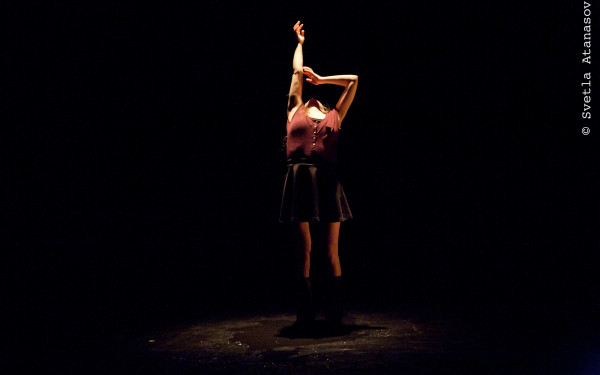The Sport Within the Art
A group of dancers jump around, contorting and smiling in spite of the obvious physical exertion. Their hands cut through the air in delicate but precise movements to frame their bodies.
They are living, moving, breathless sweaty pieces of art unraveling a story movement by movement.
As they collectively land on the floor, the room on the seventh floor of the John Molson Building hums with vibration.
“Every time I tell someone I’m studying contemporary dance they always say, ‘Like So You Think You Can Dance?’” said third-year dance major Linnea Gwiazda.
“There’s nothing on So You Think You Can Dance I’ve ever done […] That’s not what we do in this program.”
The Concordia Contemporary Dance program is one of a kind—in that students are taught choreography as well as performance.
For the degree-seeking dancers wishing to immerse themselves in the vibrant Montreal art scene there are, in actuality, no other options.
But for the ConU dancers, the uniqueness of the program means there are no other options in North America that intentionally address the artistry between movement and emotion—more than just technique and the physical ability to leap and kick.
As well as being graceful, dancers have to be very fit. Their bodies must be able to withstand heavy cardio exercises, heavy floor contact and continuous stretching.
“My friend doesn’t consider dance an art form, but she does consider it a sport. At least she realizes how much it taxes the body,” said first-year student Emma Chorostecki.
Dancers have a lifestyle dedicated to keeping their bodies prepped for the exhausting technique classes they have five days a week.
‘Tech,’ as it’s known, is more than a physical workout, as students try to absorb new movement styles all while performing to the best of their abilities, as each movement is evaluated. But as much as tech is exhausting, the students stress the need for additional workouts at Le Gym or at other dance technique classes in Montreal.
“It’s a different sort of physical demand. Because we’re learning so much, it’s so mentally and physically exhausting,” said Chorostecki. “I’m an athlete, but I would qualify that [as being] a dancer—but that’s because I’m proud of the blend of creativity, determination and effort I put into my technique.”
“Teaching someone with talent [but no] motivation to work is like pulling a car up a hill. Even if it’s a Cadillac, you’re still pulling it up a hill.” Silvy Panet-Raymond, Contemporary Dance Teacher
Despite the physical demands, the program stresses they do not regulate students’ body types—only the level of effort they give in class. Peer into a dance class and a variety of body types can be seen, but all possess the same ability to move.
“You can have somebody as thin as a stick who does not have that immense power. But then again you can. You’ve got to accept the body you’re born with,” said professor Silvy Panet-Raymond, who’s been with the program since 1986.
“You’ve got to train and be consistent. You have to eat well, sleep well and be incredibly disciplined.”
The students all buy into this stringent methodology, and they seem to think they’ve found the right program.
“I had auditioned for places in Ontario and mailed auditions out to Western Canada, but once I got to the Concordia audition I just knew I had to get in here,” said third-year dance student and Toronto native Maxine Segalowitz.
“It was less of a choice. Everybody in our program is contemporary in the way they are as a person.”
Here, dancers only perform student-choreographed work, beginning with an end-of-year showcase in their first year and bi-annual showcases in the second and third. Students take months creating pieces they think are worthy of showcase, and rehearsals for shows extend well into early morning hours.
The added focus on choreography makes for a sharp learning curve.
Traditionally, more commercial-thinking choreographers might suffer some growing pains when adapting to the idea of dance as primarily art, as opposed to entertainment. There’s no student executing ubiquitous “…Baby One More Time” music videos with twirling and flailing Britney Spears choreography.
Artistic ambitions and talent alone aren’t enough, however. Genuine creative energy and passion is necessary to be chosen out of a pool of around 100 students.
“Teaching someone with talent [but no] motivation to work is like pulling a car up a hill. Even if it’s a Cadillac, you’re still pulling it up a hill,” said Panet-Raymond.
And Gwiazda and Chorostecki are passionate—they feel content with their choice to pursue a field with little monetary gain awaiting them in their future.
“In my first year, in my class of 29, my professor said about three of [us] will be somewhat successful,” said Gwiazda.
“We’ll be working five jobs to support this art, but at least we’ll be happy.”
The first performance of the semester for the Contemporary Dance Department, called Studio 7, is happening Jan. 27 at the MB Building, room 7.625. Entrance is free and beer is $2.00.

3_900_598_90.jpg)
1_700_1113_90.jpg)
4_900_608_90.jpg)
5_900_606_90.jpg)


2_600_375_90_s_c1.jpg)
_600_375_90_s_c1.jpg)
